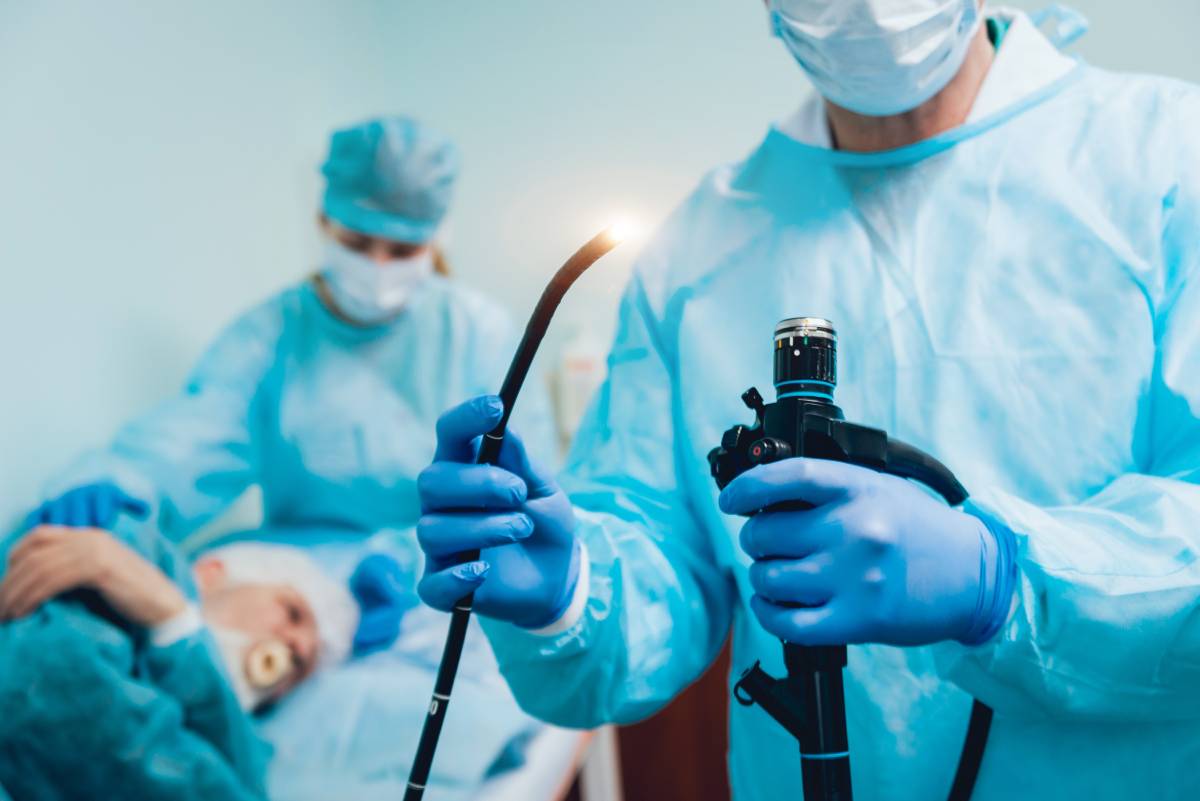Endoscopy Preparation and Anesthesia Considerations

Administering anesthesia outside of the operating room is becoming more of a common practice, particularly in gastroenterology endoscopy suites2. In the OR, administration of anesthesia and all the preparation required is highly standardized as per national guidelines1. It requires a comprehensive physical exam and thorough history, labs and examinations of any existing comorbidities1. In endoscopy suites, the preparation can be much less extensive, the justification being that these procedures are often low risk, even with sedation1. Even so, guidelines for anesthesia and preparation in endoscopy suites need to be clearly defined and standardized to optimize patient outcomes1.
Advanced endoscopy combines diagnostic with therapeutic intervention, and the complexity of the procedures can necessitate the use of anesthesia for longer periods of time1. Required preparation ahead of anesthesia administration for an endoscopy includes a history and physical (H&P), a pause in food intake before the procedure (NPO interval), appropriate equipment, screening for chronic medications and informed consent1.
The H&P component is to identify comorbidities and active illness and malignancies in patients undergoing a colonoscopy and to find a procedural approach that is synergistic with these comorbidities1. NPO instructions are more variable, with a shorter interval for a diagnostic colonoscopy for which a healthy patient is prepared with bowel prep solution1. However, in patients with delayed gastric emptying, the high volume of prep solution that is given can cause life-threatening complications under deep sedation, and thus patients should be screened before being instructed to undergo routine bowel preparation1. In terms of chronic medications, patients are typically advised to continue taking antihypertensives, pain and psychiatric medications, and medications for chronic illnesses prior to colonoscopy1. The exceptions to these are ACE inhibitors, angiotensin receptor blockers, diuretics, diabetes medications, and anticoagulants1. Patients on such medications must be evaluated on a case-by-case basis; patients on coumadin for recent pulmonary embolism or prosthetic heart valve may be bridged to low molecular weight heparin, and patients on insulin should be managed with fasting glucose and sliding scale insulin1. Furthermore, endoscopy suites must have their own anesthesia equipment needed for colonoscopy, with a source of pipeline oxygen, airway gear options, monitoring equipment and an emergency cart present that includes a defibrillator and all things required for cardiopulmonary resuscitation1. And finally, informed consent is required and is unique to the level of sedation induced during the procedure1. Providers can promise to try to minimize sedation, however, informed consent must cover deep sedation and loss of consciousness to cover for unforeseen circumstances occurring during the procedure1. Each of these elements should exist in the preparation for an endoscopic procedure, to ensure a patient’s safety and the best possible outcomes1.
Outpatient, rapid turn-over colonoscopy preparation can look a little different1. Sedation agents should primarily cause minimal respiratory depression and rapid emergence, and preferably suppress post-operative nausea1,2. Currently, moderate sedation with midazolam and an opioid is the first line method, however propofol is increasingly becoming more commonly used3. Midazolam is preferred because it has a shorter duration of action and better pharmacokinetic profile when compared to other benzodiazepines, and propofol has a better safety profile, particularly in patients with advanced liver disease who are at risk of hepatic encephalopathy3. Fentanyl or pethidine are the most popular opioids used with a benzodiazepine, and all sedation agents are modified depending on patient risk factors, such as obesity, pregnancy, age, and end-organ disease3.
The highly variable nature of patient profiles, as well as the many different types of procedures performed in endoscopy suites, makes standardization of anesthesia preparation a difficult task. However, it is necessary to prepare thoroughly in order to make sure that all patients receive the highest standard of care despite such variability.
References
- Tetzlaff JE. Practical considerations in the management of sedation for colonoscopy. Current Opinion in Anaesthesiology, 2016; 29(4): 512-518. doi: 10.1097/aco.0000000000000352
- Liu H, Waxman DA, Main R et al. Utilization of Anesthesia Services During Outpatient Endoscopies and Colonoscopies and Associated Spending in 2003-2009. Journal of the American Medical Association, 2012; 307(11): 1178-1184. doi: 10.1001/jama.2012.270
- Triantafillidis JK, Merikas E, Nikolakis D, and Papalois AE. Sedation in gastrointestinal endoscopy: Current issues. World Journal of Gastroenterology, 2013; 19(4): 463-481. doi: 10.3748/wjg.v19.i4.463
